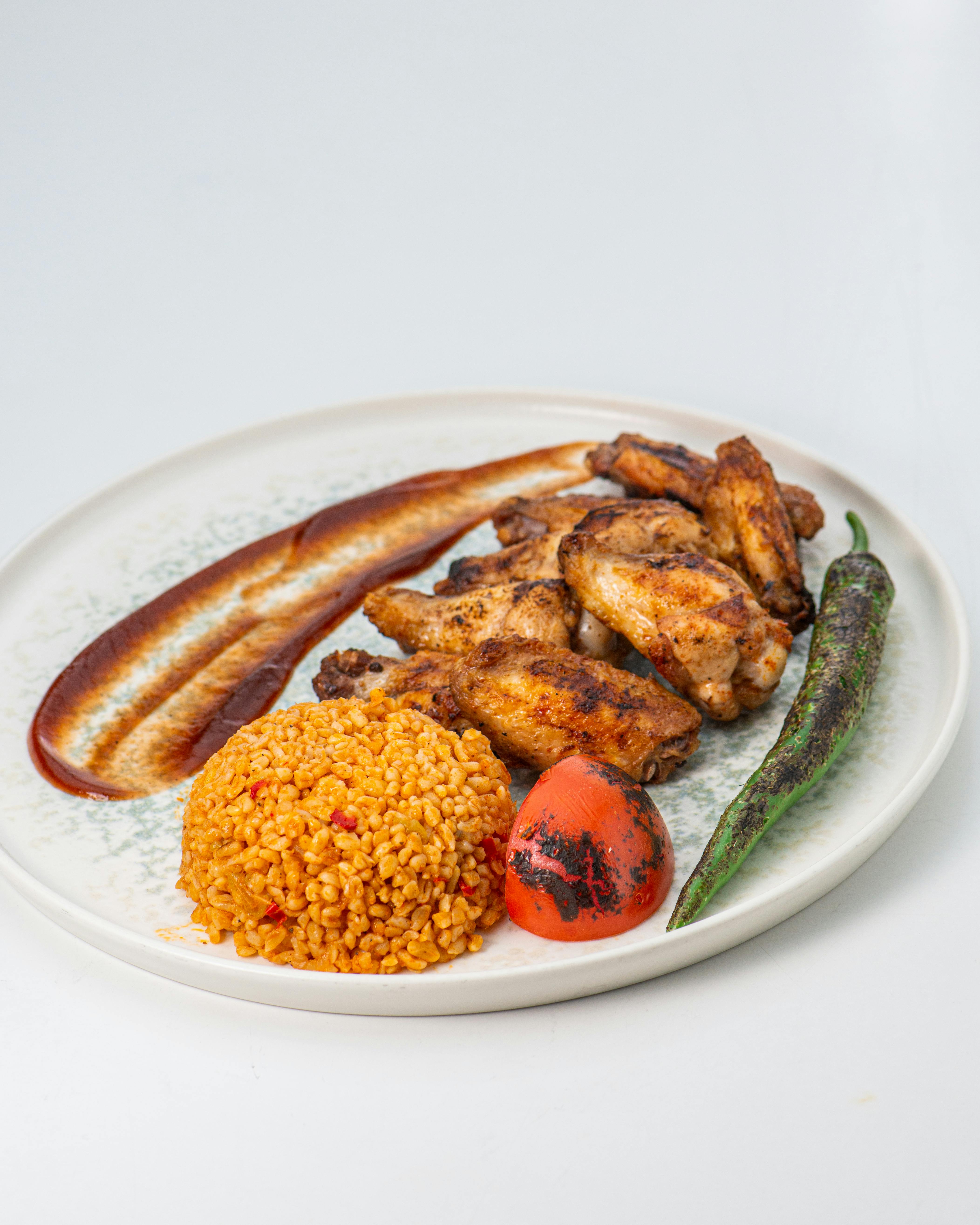Essential Guide to Cooking Boston Butt in the Oven for 2025
Cooking a Boston butt can be a delightful experience for both novice and experienced chefs. This cut of pork, often referred to as pork shoulder, is known for its rich marbling, which ensures that it turns out juicy and tender when cooked correctly. This guide will walk you through the best practices for baking a Boston butt in the oven, highlighting various cooking techniques, seasoning options, and delicious finishing touches. The goal is to turn your Boston butt into a mouthwatering centerpiece for your dining table while simplifying the cooking process.
As you explore this guide, you will discover not only how to cook Boston butt but also various recipes, tips on seasoning, cooking times, and ideal temperatures to reach the perfect outcome. Whether you're planning a family dinner or a festive gathering, mastering the art of cooking Boston butt will enrich your culinary repertoire. We'll also touch on popular sides and sauces that pair well with this dish, ensuring that your meal is complete and satisfying.
Get ready to create that perfect Boston butt and maybe even impress your friends and family with your newfound culinary skills!
How to Prepare Boston Butt for Cooking
Selecting the Right Cut
Choosing the right Boston butt is crucial for a successful cooking experience. Look for cuts that have a good balance of fat and meat. The marbling within the meat will aid in producing juicy and tender results. A well-trimmed but not excessively lean cut usually provides the best flavor and moisture. When shopping, you’ll often find pork shoulder labeled as Boston butt. Take your time to inspect and select quality meat for the best outcome.
Essential Marinades and Seasonings
Marinating your Boston butt can add incredible depth and flavor. Popular marinade options include a blend of apple cider vinegar, brown sugar, and your choice of spices. You can also go for a dry rub consisting of salt, pepper, paprika, garlic powder, and cumin to create a savory crust when cooking. Allow your seasoned meat to marinate for at least a few hours—overnight is even better! This helps tenderize the meat and guarantees a more flavorful experience.
Preparing Your Cooking Space
Before cooking, it’s essential to prepare your kitchen and cooking area. Ensure you have essential tools handy—sharp knives for trimming, a good quality roasting pan for oven cooking, and a meat thermometer to monitor the internal temperature. Preparing your space can save time and make the cooking process smoother, which is vital for an enjoyable cooking experience.
Equipment You Will Need
For oven cooking a Boston butt, invest in high-quality cooking equipment such as a heavy-duty roasting pan, aluminum foil, and a sharp carving knife. A good meat thermometer is essential for ensuring the pork reaches the ideal internal temperature of 190–205°F, which will help achieve that melt-in-your-mouth texture. If you're interested in maximizing flavor, consider utilizing a convection oven, which circulates hot air and often yields more caramelized and flavorful results.
Initial Steps Before Cooking
Prior to placing your Boston butt in the oven, let it sit at room temperature for about 30 minutes. This practice promotes even cooking and helps avoid a tough crust. Also, pat the meat dry with paper towels to promote browning during the cooking process. Remember, pre-heating the oven is a critical step that should not be overlooked. Set your oven to the appropriate temperature—generally around 225-250°F for slow cooking methods.
Cooking Boston Butt: Techniques and Temperature
Oven Cooking Methods
Cooking the Boston butt in the oven is one of the most efficient methods to achieve tenderness. To do this, you can use either the low and slow method or higher heat. The low and slow approach usually results in succulent pork, cooked over several hours at a temperature of around 225°F. For those short on time, a faster method at 325°F can also work but requires careful attention to prevent drying out the meat.
Understanding Cooking Times
Cooking time varies depending on the method and size of the Boston butt. A general rule of thumb is to cook for about 1.5 to 2 hours per pound at lower temperatures. For example, a 4-pound Boston butt could take anywhere from 6 to 8 hours. Always refer to the internal temperature and not just the clock. A well-cooked Boston butt will read between 190°F and 205°F using a meat thermometer when it's perfectly tender.
Utilizing Foil for Moisture Retention
Wrapping your Boston butt in foil allows steam to circulate and keeps the meat moist during cooking. This technique prevents over-browning and creates a juicy environment ideal for flavor development. You can remove the foil during the last 30-60 minutes of cooking to allow for a beautiful crust to form on the exterior if desired.
Crisping the Outer Layer
To achieve a deliciously crispy crust, consider broiling the Boston butt for a few minutes after cooking. Broiling at a high temperature, while keeping a close eye, will help you hit the perfect balance of crispy outside and tender inside. This last-minute step enhances the flavor and presentation of the dish, making it visually appetizing.
Resting Before Serving
It’s essential to allow the cooked Boston butt to rest for at least 15-20 minutes before slicing. Resting enables the juices to redistribute within the meat, preventing it from pooling on the plate and enhancing its overall flavor and moisture. Use this time to prepare accompanying sauces or sides, like roasted vegetables or a tangy coleslaw.

Delicious Serving Suggestions for Boston Butt
Classic Sides That Pair Well
When serving your Boston butt, consider a variety of sides that complement its richness. Traditional options include coleslaw, creamy mashed potatoes, or roasted vegetables. Each of these sides can enhance the flavor profile of the dish while adding freshness to the overall meal. Incorporating a variety of textures and flavors can create an inviting dining experience.
Making Boston Butt Sandwiches
Boston butt is also perfect for delightful sandwiches! After cooking, shred the pork and serve it on toasted buns with a flavorful barbecue sauce and pickles. Enhance the presentation with a sprinkle of chopped parsley or add some fresh cabbage for crunch. These sandwiches are not only easy to make but are also a crowd-pleaser, perfect for casual gatherings or game-day events.
Enhancing with Sauces and Dips
Adding sauces can elevate the flavor experience of your Boston butt. A sweet and tangy barbecue sauce or a zesty vinegar-based sauce are both excellent options. Additionally, consider a homemade chimichurri for those who enjoy a fresh and herbaceous touch. These sauces not only enhance flavor but can also entice a variety of taste preferences for your guests.
Creative Presentations
When serving Boston butt, presentation can make a big difference. Using a serving platter, arrange sliced pork with colorful sides for an inviting look. Consider adding fresh herbs like rosemary or thyme around the pork for an aromatic touch, enhancing the meal's overall appeal. Sliding your favorite sides beside the meat creates an inviting plate, perfect for entertaining.
Storing and Reusing Leftovers
If you have leftovers, there are many ways to enjoy your Boston butt again. Store it in an airtight container in the refrigerator for up to four days. Use leftovers to craft hearty soups or a flavorful pasta dish, or prepare a comforting casserole. The options are vast—reimagining a classic allows for delicious meals that stretch your ingredients further.
Common Mistakes to Avoid When Cooking Boston Butt
Overcooking the Meat
One of the most common mistakes is overcooking the Boston butt. Always monitor the internal temperature with a meat thermometer, ensuring it reaches that sweet spot of tenderness without drying out. Setting timers can help but understanding the cooking process is key for consistently perfect results.
Neglecting Proper Seasoning
Failing to season your Boston butt adequately can lead to bland flavors. Ensure you take the time to apply your rub or marinade generously, allowing flavor to penetrate the meat. Don’t be afraid to experiment with different spices and herbs to create your signature blend.
Skipping the Resting Period
Many people cut right into their meat after removing it from the oven. Skipping the resting period can lead to dry pork. Allow the meat to sit for a bit; this not only retains moisture but also enhances the overall taste of the dish, making it more enjoyable for everyone.
Ignoring Quality of Ingredients
Using lower-quality meat can drastically impact your results, especially with a cut like Boston butt. Invest in high-quality pork, ideally sourced from local farms, for the best flavors and textures. The care and quality put into the raw ingredients translate to the final dish's success.
Not Using a Meat Thermometer
Many home cooks rely strictly on cooking time rather than checking internal temperatures. A meat thermometer is an indispensable tool for achieving the perfect Boston butt. Learning the correct internal temperatures and using a reliable thermometer will boost your cooking confidence and lastly, your results.

Q&A: Common Questions About Boston Butt Cooking
What is the best way to cook Boston butt?
The best way to cook a Boston butt is using low and slow methods, such as slow roasting in the oven, which allows the fat to render and the meat to become tender. The ideal temperature is around 225-250°F, cooking for about 1.5 to 2 hours per pound.
How long does it take to bake a Boston butt in the oven?
The cooking time for baking a Boston butt can vary but typically ranges from 6 to 8 hours, depending on the weight and oven temperature. Always check the internal temperature to ensure it's fully cooked.
What is the ideal internal temperature for Boston butt?
Your Boston butt should reach an internal temperature of 190°F to 205°F for optimal tenderness. This ensures that the connective tissues break down, leading to a juicy and flavorful result.
Can I use a slow cooker instead of the oven?
Absolutely! A slow cooker is another excellent method for preparing Boston butt. It allows for even cooking and retention of moisture. Just remember to adjust the cooking time—the slow cooker usually needs about 8-10 hours on low heat.
What can I do with Boston butt leftovers?
Leftovers from Boston butt can be utilized in many creative ways! You can make sandwiches, hearty soups, pizza toppings, or even mix them into a stir-fry. The options are endless, making it a versatile dish for transforming into delicious meals.
```